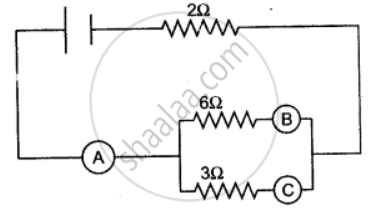Advertisements
Advertisements
प्रश्न
Name the law which relates the current in a conductor to the potential difference across its ends.
उत्तर
Ohm's law gives the relationship between the current in a conductor and the potential difference across its ends. According to this law, at constant temperature, the current flowing through a conductor is directly proportional to the potential difference across its ends.
APPEARS IN
संबंधित प्रश्न
The other name of potential difference is:
What is the ratio of potential difference and current known as?
A p.d. of 10 V is needed to make a current of 0.02 A flow through a wire. Wire p.d. is needed to make a current of 250 mA flow through the same wire?
Water in the waterfall flows from a higher level to the lower level because of ____________.
A current of 0.2 A flows through a wire whose ends are at a potential difference of 15 V. Calculate:
(i) The resistance of the wire, and
(ii) The heat energy produced in 1 minute.
Define the following:
Potential difference
Write an expression for the electrical power spent in flow of current through a conductor in terms of resistance and potential difference.
Five resistors of different resistances are connected together as shown in the figure. A 12 V battery is connected to the arrangement.

Calculate:
(i) the total resistance in the circuit
(ii) the total current flowing in the circuit.
In the figure given below, A, B and C are three ammeters. The ammeter B reads 0.5A. (All the ammeters have negligible resistance.)

Calculate:
(i) the readings in the ammeters A and C.
(ii) the total resistance of the circuit.
